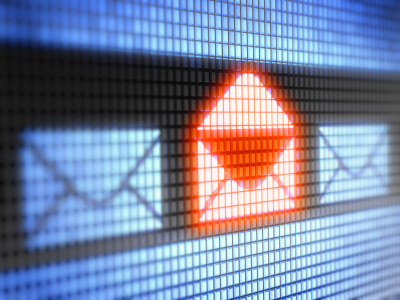 |
Despite the growing popularity of social media as a media relations tool, the e-mailing of press releases is not abating. More than 90% of respondents in an April 2012 PR News/Cision survey said they planned to either hold steady or distribute more press releases via e-mail in 2012.
Journalists, however, may sift through the literally hundreds of press releases, media alerts and e-mail pitches every day (I just deleted a handful as I typed this paragraph). Since you only have a handful of words to persuade the reader to continue reading, it's important that your press materials start with compelling, informative subject lines. Here's eight tips for nailing the e-mail subject line:
-
Be concise. Subject lines need to convey as much essential information in as few words as possible, so avoid unnecessary fluff or padding. The journalist should know just enough from reading the subject line to determine if the story might be of interest to them and their readers.
-
Point out the benefits. Whether you're promising an inside scoop, a follow-up to a journalist's recent story or a trend that impacts their readers, make sure your subject line indicates that the e-mail is of value to the recipient, and that it's not just part of a wide shotgun blast of company information you're sending to all your contacts.
-
Don’t overpromise. It’s tempting, in an effort to grab journalists’ attention, to exaggerate the content of a release. Editors and reporters are sensitive to hype and will not look favorably on a press release or pitch that doesn’t deliver on its subject line.
-
Make sure the tone of the subject line matches the story. Use turns of phrase or cleverness only when it’s in keeping with the announcement—and the brand making the announcement.
-
Put your client’s name in the subject line. Whether it’s an individual, a company or a brand, the name should always be named in the subject line. However, when there are multiple companies, or news components, involved in an announcement, be careful about eating up all your precious character space with companies and names.
-
Think like a journalist. Use the newspaper and magazine headlines and blurbs that grab your attention as sources of inspiration. They are often short and capture the story in one statement while inspiring the reader to seek more information—e-mail subject lines should do the same.
-
Don't try to bamboozle the recipient. Unless you were actually engaged in an ongoing conversation, putting "RE:" in a subject line is manipulative. Once your recipient realizes it was only a ploy to get his or her attention, annoyance or rage will be the likely response—not coverage.
-
Don't feed them spam. Certain words trigger alerts for spam filters. Examples of such words are “free,” “you,” “mortgage” and “order now,” says says Barbara Ulmi, head of marketing at e-mail solutions company GraphicMail. Complete lists of most frequently used spam keywords are available online. Excessive punctuation (like capitals and exclamation marks) also triggers spam filters. Not only that, it’s a cheap trick: it might be a matter of urgency for you, but is it really so urgent for your target?
Follow Bill Miltenberg: @bmiltenberg
